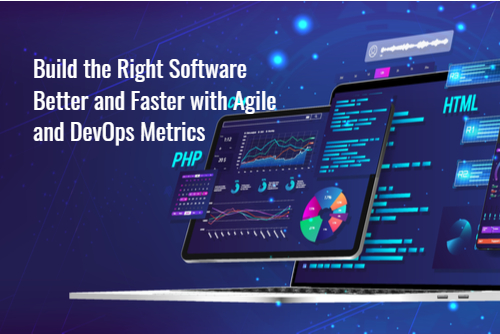2025-06-06
AI-Powered Business Transformation with Microsoft Fabric
29 November, 2021
DevOps

Some people call it the age of the Internet. Others call it the age of the smartphone.
We think it should be called the age of software.
Why?
Because it's software that powers not only the Internet but also your smartphone and tablets, your laptop, your watch, and even your TV.
Since the software is critical to so many products and services, there is a constant desire to develop software that is better. And this desire extends to developing software in ways that are faster than before.
How can you build software better and faster?
We believe that two methodologies, when used together, can help you build software better and faster.
These two methodologies are Agile and DevOps.
What is Agile
Agile, in the context of software development, refers to a methodology or approach of creating software by quickly releasing a minimum viable product (MVP) and then iteratively improving the product based on user feedback.
In contrast to older methodologies, the Agile approach to software development enables change easily, supports changing requirements, and enables early and continuous release of working features.
What is DevOps
According to the DevOps (developer & operations) approach, the teams that traditionally operated in their own silos now work together throughout the software development life cycle.
DevOps fosters a culture of collaboration between teams: this is achieved through joint planning and sharing of processes, priorities, and concerns.
How do Agile and DevOps work together?
Agile and DevOps actually don’t compete. Rather, they are complementary approaches to developing better software.
The benefits of using both Agile and DevOps approaches compound through:
Metrics
The ability to make accurate quantitative measurements not only gives insight but allows developers and leaders to make appropriate decisions and actions. Agile and DevOps metrics that are applicable to software development give the required insight that helps you make informed and timely decisions.
Agile Metrics
DevOps metrics
The magic of metrics is that, in contrast to vague or subjective information, they give you quantifiable insight. You can develop dashboards that display all relevant metrics, and a quick look will give you an accurate overall picture of what is working and what needs to change.
The metrics will also tell you whether your investments in Agile and DevOps are delivering the results that you desire.
A lot that seems nice in theory doesn't work out well in practice. Most often, the reason is that we tend to get carried away with the surrounding hype and implement based on our own perceptions rather than on the basis of experience and on the ground realities.
Let Pronix help
This is where Pronix can help you leverage the best of Agile and DevOps approaches to help you build better software and to do it faster.
Pronix offers a wide range of IT-based services, including digital transformation, consulting, infrastructure management, product engineering, and security. Our experts have over ten years of experience in implementing SAP and Microsoft solutions. We also offer solutions based on cloud offerings from Microsoft, Amazon, and Google.
Contact us today to start a discussion that could be the first step towards adopting Agile and DevOps for supercharging your software development efforts.
Latest Posts
OUR BLOG
© 2025 Pronix inc. All Rights Reserved